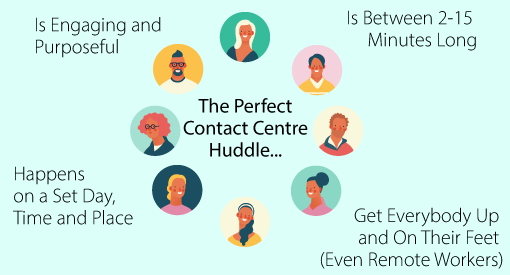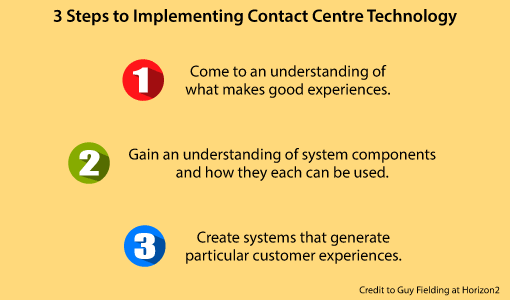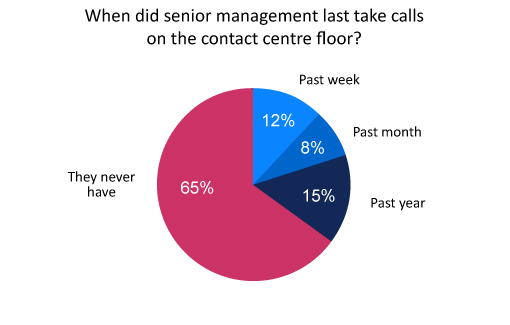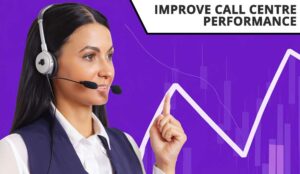In today’s fast-paced business landscape, call centres are more than just customer service hubs – they’re the frontline of brand reputation and directly impact customer satisfaction, customer loyalty, operational efficiency, and overall business success.
With the increasing demands for faster, more personalized service, it’s more important than ever to equip call centres with the right strategies to meet customer expectations. We asked the experts for their advice on how to improve call centre performance.
19 Ways to Improve Call Centre Performance
1. Define Your Performance Standards
One key contact centre problem is that there is a lack of clarity within a team of advisors as to what is expected of them. This can really damage contact centre performance.
Think about it. Can someone perform to the standard that is expected of them if they don’t know what that standard is?
So, let’s consider the following questions:
- Have we defined what “good” looks like in coaching and quality monitoring?
- Are the expectations of our team leaders and coaches consistent?
- Do advisors have any insight into how their performance is being assessed?
If you cannot confidently answer these, it is time to start doing things, such as involving advisors in quality calibration sessions, so they can see for themselves how their performance is being measured.
For ideas for inspiring call centre advisors to raise their performance levels, read our article: How to Improve Agent Performance in the Call Centre – With a Checklist
2. Focus on Agent Motivation
Contact centre motivation can be tricky because it is very difficult to scale your team assessments to evaluate everyone’s performance accurately every month.

Martin Hill-Wilson
So, how can you motivate advisors when it is so difficult to assess everyone’s performance on a short, monthly basis?
One method is to make a point of catching advisors doing good things and to use that recognition to “refill” their sense of purpose. This provides intrinsic motivation.
Martin Hill-Wilson, Founder of Brainfood Consulting, explains this approach and how it can improve call centre performance further in the video below.
If you want advice on motivating your call centre team, read our article: How to Motivate Staff in 25 Ways
3. Let Everyone Listen to Good Calls
When a great call is recognized, organise a group session to listen to it together.
This approach not only reinforces the positive behaviours of the individual but also helps other advisors learn and enhance their own performance by modelling effective techniques.

Ann-Marie Stagg
“Let the rest of the team mark the call against agreed criteria to determine whether it was a good call themselves – if you don’t have these criteria, get them to create some,” says Ann-Marie Stagg, the former Chief Executive of the CCMA.
Just make sure you have the advisor’s permission to share the call first. If they are a little shy, they may be uncomfortable with you putting them up on a pedestal.
For ways to develop a call evaluation criteria, read our article: What Are the Best Call Evaluation Criteria?
4. Implement Regular Team Huddles
Bringing together team managers, leaders, and call centre agents for regular huddles sets a positive tone for the team.
Whether virtual or in-person, these huddles provide a sense of unity before daily tasks begin. A tip to enhance their effectiveness is to involve all team members, to unite everyone behind the common goal of improving call centre performance.
Other tips for organizing a great team huddle are highlighted in the graphic below:

Just remember that these huddles are quick and engaging, to set the pace for the rest of the day, while they are also designed to create focus and bring everyone together.
5. Understand Employee Empowerment
Employee empowerment isn’t just a buzzword. Instead it is a concept in which employees have significant control over what they do, how they do it and when they do it.
If we address each of these three areas in the contact centre, we can empower and inspire advisors to improve call centre performance.
Let’s take the “what they do” area, as an example of how this might work. To give advisors more control over what they do, you could try:
- Creating positions like a “subject matter expert”, which advisors can apply for
- Giving opportunities to advisors to move across different contact centre departments
- Offering advisors the chance to learn new skills, which can also benefit the contact centre
For more on empowering contact centre advisors, read our article: What Does Employee Empowerment REALLY Mean?
6. Introduce Flexible Scheduling Options
Advisors are going to perform at a higher level if they are working when they want to work. But giving them more control over their schedules is easier said than done.
Of course there is lots of advice out there for adding flexibility into your contact centre workforce management (WFM) plans, to give advisors more control. This will include things like:
- Measuring annual leave in hours and not days
- Offering advisors a “personal rule” to build into their schedule
- Using a WFM to make shift-swapping easier
But one option that has really gained momentum is offering contact centre homeworking and offering in a hybrid homeworking–office environment.
7. Sanity Check Your Tech
It’s important that you understand the core functionality and theory behind each contact centre system, so you can use it to its best advantage – now and in the future.

Guy Fielding
In addition, when you look to bring in technology to improve call centre performance, you need to introduce it in a way that complements your customer experience.
By this, we mean following out the process that has been outlined by Guy Fielding of Horizon2 below:

Remember also not to rush into make technology-related decisions.
As Sir Frances Chichester once said of a rather large cruiser: “Sure she’s pretty, but, if the engine gives out, she’s a bit big to row. I’ll stick to the sails, thank you.”
8. Review Your Key Performance Indicators (KPIs)
When was the last time that you took the time to re-examine your KPIs? Does everything that you measure have a purpose or are you measuring things just for the sake of it?
You could be putting time into things that might not only be unnecessary but also conflict with other contact centre goals.
These are important questions to ask yourself because you could be putting time into things that might not only be unnecessary but also conflict with other contact centre goals.
Average Handling Time (AHT) is the classic example of this. If you are targeting this KPI as a means of getting advisors to speed up calls, that could cause them to rush through calls.
Not only could this approach damage call quality, but it will also negatively impact your other targets, like Customer Satisfaction (CSAT) and First Contact Resolution (FCR).
So, taking the time to review your metrics and questioning the purpose behind them can be a useful activity to clarify your intention to improve call centre performance.
For more on using KPIs in the contact centre, read our article: An Introduction to Contact Centre KPIs and KPAs
9. Implement a Call-Avoidance System
Implementing a call-avoidance system will provide you with detailed analysis of why customers are calling and the resultant root cause.
A call-avoidance system is the process of how your company identifies and acts on the data that the call centre provides to eliminate such root causes, so that advisors do not have to answer the same query repeatedly.
Your system will likely rely on customer complaints, advisor feedback and, if you have such technology, a speech analytics system.
“The common root causes will signify many different issues, which will often be out of the call centre’s control,” adds David, one of our readers.
But by doing this analysis anyway, your company has taken action to eliminate avoidable calls, which will allow agents to spend more time on the calls that are left. This will likely boost CSAT and, consequently, improve call centre performance.
10. Build Relationships With Other Departments
Make a point of getting to know key people who have responsibility for areas outside your control but which impact on your ability to manage your call centre effectively.

Janette Coulthard
“A quick chat over a cup of coffee or tea can achieve more than a formal meeting in creating a relationship of mutual benefit,” says Janette Coulthard, a Contact Centre Consultant at Pole Star Coaching.
Of course, this would also mean identifying ways in which your contact centre can benefit other departments too, but that should be fairly easy, with all of the great customer insights that you have at your disposal.
Just remember, strong relationships give you influence, and influence gives you the power to drive change and increases your ability to achieve objectives, like improving call centre performance.
11. Personalise Customer Conversations
Contact centres have become good at personalizing customer conversations, but – in terms of making a real difference to customer experience – many will argue that this is too far downstream.
To use personalization in a way that will really benefit call centre performance, we need to make our ability to recognize customers more systemic, so we can deal with them in smarter ways.
One example of this is to fine-tune our routing strategies, even if that is as simple as segmenting customers using IVR options.
Improving your IVR routing options to match the right customer to the right advisor will likely improve customer satisfaction as the customer will be speaking to a skilled advisor who is able to respond to their queries.
This will also improve advisor job satisfaction in the knowledge that their customers have been provided with appropriate/helpful information and advice.
For more complex personalization strategies that will improve call centre performance, read our article: 6 Ideas for a Great Personalized Customer Experience
12. Walk in the Advisors Shoes
A poll conducted by Call Centre Helper revealed that 65% of senior managers have never taken a call in their contact centre.

This is concerning because without first-hand experience of the advisor role, managers may struggle to effectively support their teams and improve overall performance.
By actively participating in customer journeys and taking calls, managers can gain valuable insights into the day-to-day challenges faced by their staff.
This hands-on approach not only helps management identify areas for improvement, but also ensures that processes are running smoothly, ultimately boosting call centre efficiency and enhancing the customer experience.
13. Add Some Healthy Competition
Encourage and promote friendly competition. This can be done between different advisors, teams and even departments.
One idea is to challenge another office working on a similar project and set the criteria for the competition.
These “short sprint” competitions keep things fresh, and eliminations can add a bit of extra zing.
Offering immediate prizes for the winning offices or advisors can also be a good idea and could lead up to a grand prize for the overall winner.
This kind of incentive is useful in building camaraderie inside your team.
Thanks to Steven
Find a list of games that inspire this type of competition in our article: The Best Motivational Games for Employees and Remote Workers
14. Provide Training and Support
Improving performance begins with providing the advisors with proper training and support tools before a campaign goes live.
Improving performance begins with providing the advisors with proper training and support tools…
Too many times companies will train customer service advisors on solving specific cases without providing enough background information.
By doing this, these organizations are damaging call centre performance because, after all, the more information and greater empowerment advisors possess, the better they will be.
So, we really should be championing knowledge and doing what we can to develop a coaching and learning culture within the contact centre.
Thanks to Avi
15. Involve Advisors in Your Strategies
Advisors talk to customers all day long. They know their bugbears and general preferences, so we should be talking to them when developing strategies – especially if the strategy impacts them.
For example, it can work well to involve advisors in developing bonus structures, using internal surveys to gather their opinions as to what their bonus structure should look like.
While not all suggestions that advisors feed back to management will be practical, taking this feedback into account when developing advisor bonuses and incentives is great. This is because it gives advisors a say in how they are motivated.
Such a strategy can prove useful as a “You Said, We Did” exercise, to help build a sense of collaboration and drive up performance levels.
Thanks to Charlie
PhotoBox also use advisor feedback to develop their bonus structures. To find out more about their contact centre, read our article: 18 Things You Can Learn From the PhotoBox Contact Centre
16. Pay Attention to the Agent Desktop
Take a look at the agent desktop. In the majority of cases this is a complex environment that leads to excessive agent training needs and increased levels of agent frustration and thus to high agent turnover.
A complex desktop can also result in increased average call handling times and… customer frustration while they wait for the advisor to resolve their issue.
That’s not all, a complex desktop can also result in increased average call handling times and, worst of all, customer frustration while they wait for the advisor to resolve their issue.
There are products on the market now that can revolutionize the agent desktop to make it more interaction-handling centric and remove the need to directly access business applications. They can even recommend what the advisor should do next.
Thanks to Richard
17. Recruit the Right People
Hiring the wrong advisor is the root cause of most contact centre performance issues. It’s a significant drain on your budget and bottom line, customer satisfaction ratings and sales results.
Every failed hire represents wasted money down the drain, not to mention the lowered productivity, poor morale and higher absences associated with a poor job fit.
Every failed hire represents wasted money down the drain, not to mention the lowered productivity…
Advisor pre-employment screening software can be highly predictive of an individual’s suitability for a particular call centre position.
The software screens out the job candidates who will burn out fast because they aren’t suited to the work – and identifies the people with the personality/job-fit, soft skills, motivation, and work ethic to be top call centre advisors.
Thanks to David
If you are looking for some more advice on contact centre recruitment, read our article: How to Recruit the Right Call Centre Agent
18. Set Agents Targets
The key to improving the performance of a contact centre is to reward your top performers in order to create a benchmark that fellow call centre employees can strive to emulate or even surpass.
Setting targets, encouraging positive behaviour and creating an atmosphere that prizes self-development will not only have positive repercussions on the employees but will also impact the bottom line in a positive direction.
Thanks to Brian
19. Identify Underperformers and Implement Performance Management
In any call centre, addressing underperformance is crucial for maintaining productivity and meeting targets. It’s important to systematically identify agents who are not meeting expectations and uncover the root causes of their challenges. This focused approach can significantly enhance overall team performance.
If coaching and support fail to elevate an agent’s performance, consider implementing a performance management system that sets clear expectations and motivates improvement.
Thanks to Johnathan
Find more advice on improving contact centre performance, read these articles articles:
- 50 Quick Ideas to Improve Contact Centre Performance
- How to Inspire Contact Centre Agents to Improve Their Performance
- How to Unlock the Potential of Your Call Centre Agents
Author: Megan Jones
Reviewed by: Hannah Swankie
Published On: 2nd Sep 2020 - Last modified: 23rd Oct 2024
Read more about - Hints and Tips, Agent Performance, Janette Coulthard, Martin Hill-Wilson, Performance Management





































